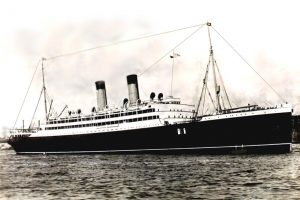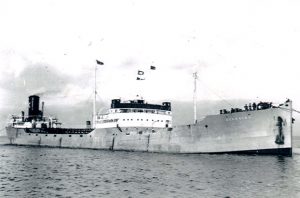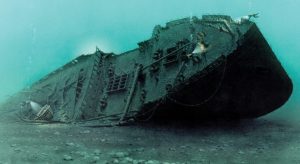 Two years after the sinking of the Titanic, the world was still very aware of the dangers of travel by ship. The Titanic was supposed to be unsinkable, and yet on April 14, 1912, it took more than 1500 people to the bottom of the Atlantic Ocean with it. Many safety precautions had changed since Titanic went down. The ship’s radio room had to be manned at all times, crews were trained extensively in emergency procedures, and ships were equipped more than enough lifejackets and lifeboats. Every precaution that they knew to take had been taken, making The Empress of Ireland one of the safest ships on Earth.
Two years after the sinking of the Titanic, the world was still very aware of the dangers of travel by ship. The Titanic was supposed to be unsinkable, and yet on April 14, 1912, it took more than 1500 people to the bottom of the Atlantic Ocean with it. Many safety precautions had changed since Titanic went down. The ship’s radio room had to be manned at all times, crews were trained extensively in emergency procedures, and ships were equipped more than enough lifejackets and lifeboats. Every precaution that they knew to take had been taken, making The Empress of Ireland one of the safest ships on Earth.
On May 29, 1914, The Empress of Ireland left Quebec Harbor on a  transatlantic journey to Liverpool England. She was sailing in heavy fog down Canada’s Saint Lawrence River, carrying 1477 passengers and crew. The Norwegian freighter Storstad was also sailing on the Saint Lawrence River on that fateful day. Sailing in heavy fog, without the modern GPS equipment to keep everyone informed of the ships’ positions, is a seriously dangerous undertaking. I don’t know that the normal protocol was for sailing in fog, but it would make sense to me that they should drop anchor and wait for the fog to lift before continuing on. I’m sure that these days, the ships would have some kind of protocol.
transatlantic journey to Liverpool England. She was sailing in heavy fog down Canada’s Saint Lawrence River, carrying 1477 passengers and crew. The Norwegian freighter Storstad was also sailing on the Saint Lawrence River on that fateful day. Sailing in heavy fog, without the modern GPS equipment to keep everyone informed of the ships’ positions, is a seriously dangerous undertaking. I don’t know that the normal protocol was for sailing in fog, but it would make sense to me that they should drop anchor and wait for the fog to lift before continuing on. I’m sure that these days, the ships would have some kind of protocol.
The Empress and the Storstad spotted each other several minutes before the inevitable collision, but altered  courses and confused signals brought them into the fateful moment of impact. I suppose that if each ship hadn’t moved in the same direction, they might have been able to avoid the collision, but unfortunately they did move in the same direction. The Storstad penetrated 15 feet into the Empress of Ireland‘s starboard side, and the vessel sunk within 14 minutes, drowning 1,012 of its passengers and crew in the Gulf of Saint Lawrence. It was one of the worst ship disasters in history. Only seven lifeboats escaped the rapidly sinking vessel, but thanks to the efforts of the crew of the Storstad, scores of survivors were pulled out of the icy waters.
courses and confused signals brought them into the fateful moment of impact. I suppose that if each ship hadn’t moved in the same direction, they might have been able to avoid the collision, but unfortunately they did move in the same direction. The Storstad penetrated 15 feet into the Empress of Ireland‘s starboard side, and the vessel sunk within 14 minutes, drowning 1,012 of its passengers and crew in the Gulf of Saint Lawrence. It was one of the worst ship disasters in history. Only seven lifeboats escaped the rapidly sinking vessel, but thanks to the efforts of the crew of the Storstad, scores of survivors were pulled out of the icy waters.


4 Responses to Disaster On The Saint Lawrence River